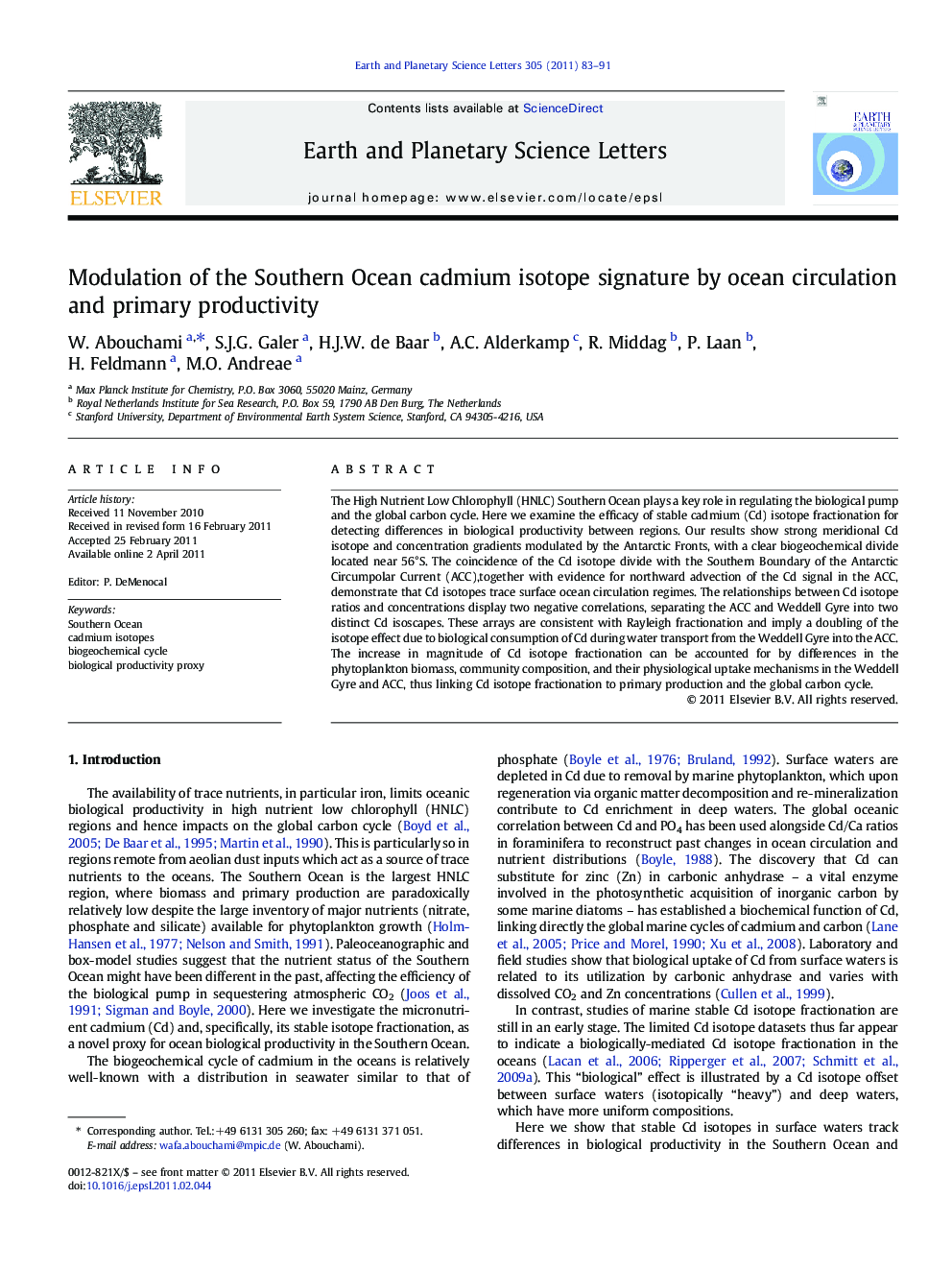| Article ID | Journal | Published Year | Pages | File Type |
|---|---|---|---|---|
| 4677954 | Earth and Planetary Science Letters | 2011 | 9 Pages |
The High Nutrient Low Chlorophyll (HNLC) Southern Ocean plays a key role in regulating the biological pump and the global carbon cycle. Here we examine the efficacy of stable cadmium (Cd) isotope fractionation for detecting differences in biological productivity between regions. Our results show strong meridional Cd isotope and concentration gradients modulated by the Antarctic Fronts, with a clear biogeochemical divide located near 56°S. The coincidence of the Cd isotope divide with the Southern Boundary of the Antarctic Circumpolar Current (ACC),together with evidence for northward advection of the Cd signal in the ACC, demonstrate that Cd isotopes trace surface ocean circulation regimes. The relationships between Cd isotope ratios and concentrations display two negative correlations, separating the ACC and Weddell Gyre into two distinct Cd isoscapes. These arrays are consistent with Rayleigh fractionation and imply a doubling of the isotope effect due to biological consumption of Cd during water transport from the Weddell Gyre into the ACC. The increase in magnitude of Cd isotope fractionation can be accounted for by differences in the phytoplankton biomass, community composition, and their physiological uptake mechanisms in the Weddell Gyre and ACC, thus linking Cd isotope fractionation to primary production and the global carbon cycle.
Graphical abstractFigure optionsDownload full-size imageDownload high-quality image (130 K)Download as PowerPoint slideResearch highlights► Meridional gradient in Cd concentration and isotopic composition in Southern Ocean. ► Biogeochemical Cd isotope provinces. ► Different Cd isotope fractionation factors in Weddell Gyre and Antarctic Circumpolar Current. ► Phytoplankton biogeography and uptake mechanisms control Cd isotope fractionation. ► Cd isotopes, novel proxy for past biological productivity.
